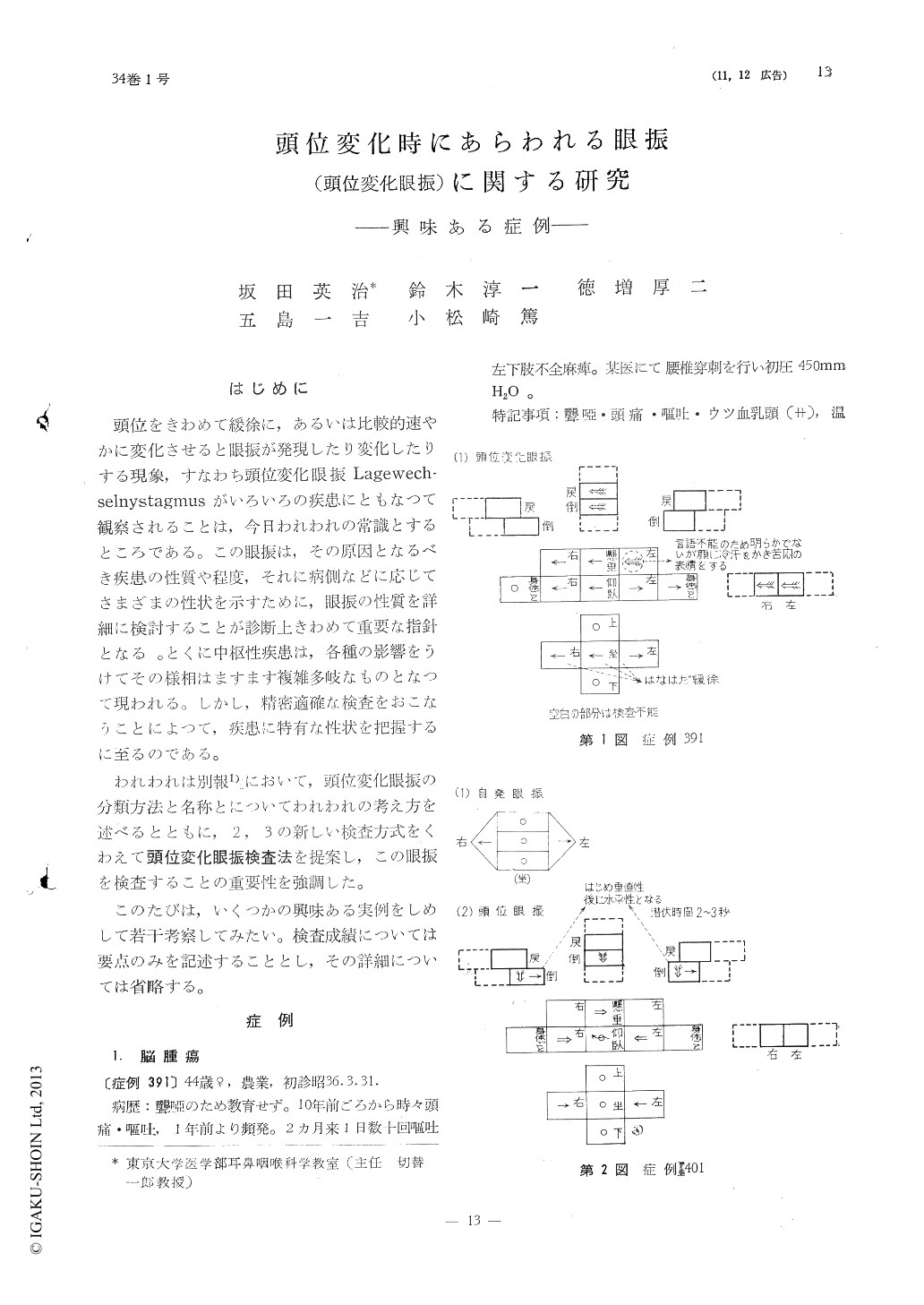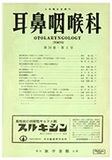- 有料閲覧
- 文献概要
- 1ページ目
はじめに
頭位をきわめて緩徐に,あるいは比較的速やかに変化させると眼振が発現したり変化したりする現象,すなわち頭位変化眼振Lagewechselnystagmusがいろいろの疾患にともなつて観察されることは,今日われわれの常識とするところである。この眼振は,その原因となるべき疾患の性質や程度,それに病側などに応じてさまざまの性状を示すために,眼振の性質を詳細に検討することが診断上きわめて重要な指針となる。とくに中枢性疾患は,各種の影響をうけてその様相はますます複雑多岐なものとなつて現われる。しかし,精密適確な検査をおこなうことによつて,疾患に特有な性状を把握するに至るのである。
われわれは別報1)において,頭位変化眼振の分類方法と名称とについてわれわれの考え方を述べるとともに,2,3の新しい検査方式をくわえて頭位変化眼振検査法を提案し,この眼振を検査することの重要性を強調した。
Observations are made on 12 cases of positional nystagmus selected from a large number of cases of nystagmus and reported w ith a review of literature.
Vertical nystagmus is usually the result of cerebellar lesion or that of the brain stem ; it may be easily stimulated by changes in movement. In contrast to this is the rotatory nystagmus which is also stimulated by bodily movements but the nystagmus is the result of lesion in the vestiblar apparatus. However, the authors are not in a full accord to the concept that in vestibular lesions the particular nystagmus is towards side or the lesion when the patient lies in such a position to hold the affected side down.
Benign paroxysmal positional nystagmus may be divided into two general types, slightly affected and chronically affected. The period of affection of the former is ralatively short in duration and it may be easily re coveredbut the latter is much graver in its outlookand lasts longer in time.

Copyright © 1962, Igaku-Shoin Ltd. All rights reserved.


